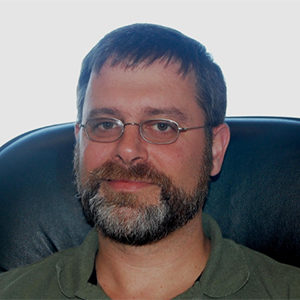An ongoing challenge in mammalian cell biology and the elucidation of human disease mechanisms is to bridge the gaps in our understanding of intracellular processes at the molecular level. Central to this challenge is the field of signal transduction, which elucidates the molecular interactions and biochemical reaction pathways that actuate and regulate cellular responses to external stimuli.

Intracellular signaling processes control the growth, proliferation, differentiation, survival, and migration of cells in normal physiological contexts, and defects in signaling form the molecular basis for cancer and many other diseases. With a quantitative approach that combines experiments and computational modeling, we gain mechanistic insights into signal transduction processes by analyzing their kinetics and spatial patterns in cells; when and where tell us how and why.
In this talk, I will discuss how we have studied the molecular mechanisms by which cells move — in particular, how cell migration is directed by gradients of soluble and immobilized attractant molecules (chemotaxis and haptotaxis, respectively). For cells such as fibroblasts that reside in the skin, both types of spatial cues are encountered during development and tissue regeneration, as those cells navigate in response to growth factor and extracellular matrix (ECM) ligands.
Although substantial progress has been made in the characterization of chemotaxis in certain contexts, I argue that we are still in the early days of understanding directed cell migration in cells that respond to both soluble and ECM cues. The argument is based on our perspective of the gap between conceptual models (based on experiments) and mathematical models (based on physicochemical principles), and an agenda for closing that gap is offered.
Jason Haugh is Professor of Chemical and Biomolecular Engineering and University Faculty Scholar at North Carolina State University, where he has been on the faculty since 2000. Prior to joining the NCSU faculty, he earned his Ph.D. in Chemical Engineering from MIT and received postdoctoral training at Duke University Medical Center.
Jason’s laboratory studies signal transduction networks that control cell proliferation, survival, and differentiation and the interplay of signaling and cytoskeletal dynamics in cell migration. His research awards include New Faculty and Camille Dreyfus Teacher-Scholar Awards from the Camille & Henry Dreyfus Foundation, a National Science Foundation CAREER Award, the Presidential Early Career Award for Scientists and Engineers, and the Office of Naval Research Young Investigator Award.
Jason is a Deputy Editor of PLOS Computational Biology and is also serving on or has served on the editorial boards of Biophysical Journal, Cellular and Molecular Bioengineering, and The Journal of Biological Chemistry. Since 2019, he has served as a Co-Director of the Molecular Biotechnology Training Program (MBTP), a longstanding program supported by NC State with funding from the NIH (T32) and Department of Education (GAANN).